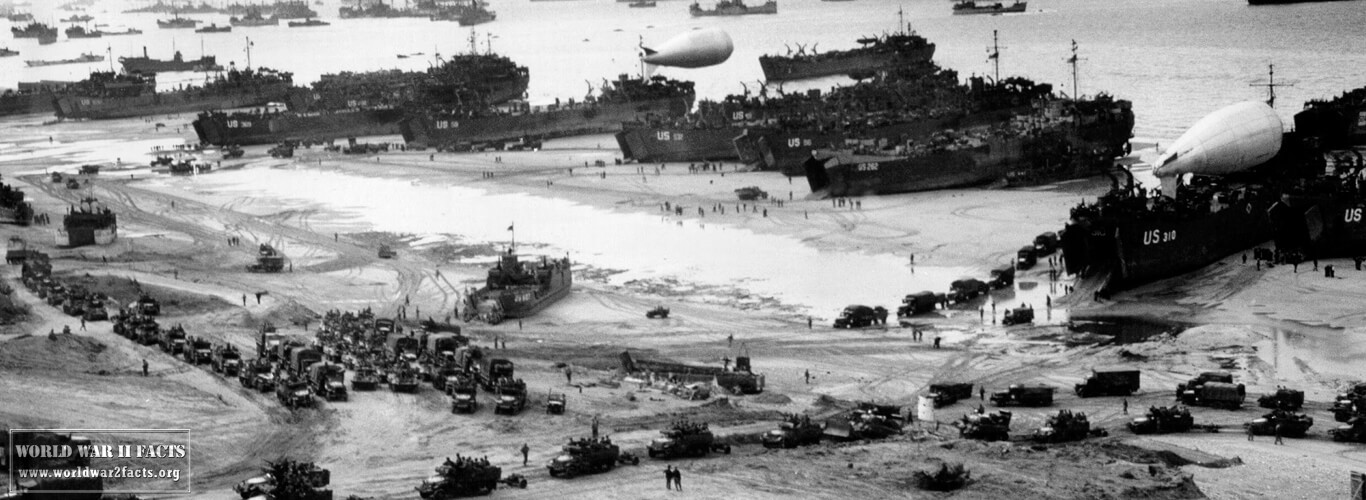SBD Dauntless Facts

The SBD Dauntless Dive Bomber, also known as the Douglas SBD Dauntless, performed the roles of both scout plane and dive bomber for the United States military during World War 2 from 1940 through 1944. The SBD Dauntless was the primary dive bomber and scout plane for the United States Navy between mid-1940 and mid-1944 and was also flown by the United States Marine Corps from both aircraft carriers and land bases in this timeframe. The Dauntless Dive Bomber is best known for its role in helping sink / cripple the Japanese aircraft carriers at the Battle of Midway that occurred in June of 1942. During its combat service, the Douglas SBD was one of the best dive bombers in the world boasting extremely long range, maneuverability, good handling characteristics, defensive armament, ruggedness, good bomb load capacity, and a great diving capability. The SBD was also used by the U.S. Army Air Corps without an arrestor hook which was known as the A-24 Banshee during the war.
SBD Dauntless Dive Bomber General Information
Contents
Role: dive bomber, scout plane
National origin: United States

Manufacturer: Douglas Aircraft
Designer: Ed Heinemann
First flight: 1 May 1940
Introduction: 1940
Retired: 1959 (Mexico)
Primary users: U.S. Navy, U.S. Marine Corps, Free French Air Force
Years in Services: 1940-1944
Number built: 5,936
Developed from: Northrop BT
SBD Dauntless Dive Bomber Specifications
Crew: 2
Length: 33 ft 1¼ in (10.09 m)
Wingspan: 41 ft 6⅜ in (12.66 m)
Height: 13 ft 7 in (4.14 m)
Wing area: 325 ft² (30.19 m²)
Empty weight: 6,404 lb (2,905 kg)
Loaded weight: 9,359 lb (4,245 kg)
Max. takeoff weight: 10,700 lb (4,853 kg)
Powerplant: 1 × Wright R-1820-60 radial engine, 1,200 hp (895 kW)
SBD Dauntless Performance
Maximum speed: 255 mph (222 knots, 410 km/h) at 14,000 ft (4,265 m)
![A 3-view drawing of a Douglas SBD-5 Dauntless published by the U.S. Navy Bureau of Aeronautics on 1 June 1944. Date 1 June 1944 Source U.S. Naval History Center [1] Author Bureau of Aeronautics, USN](https://www.worldwar2facts.org/wp-content/uploads/2013/03/SBD-5_BuAer_3_view_drawing-228x300.jpg)
Date 1 June 1944
Source U.S. Naval History Center [1]
Author Bureau of Aeronautics, USN
Cruise speed: 185 mph (161 knots, 298 km/h)
Range: 1,115 mi (970 nmi, 1,795 km)
Service ceiling: 25,530 ft (7,780 m)
Rate of climb: 1,700 ft/min (8.6 m/s)
Wing loading: 32.9 lb/ft² (140.6 kg/m²)
Power/mass: 8.92 lb/hp (5.42 kg/kW)
SDB Dauntless Armament
Guns:
2 × 0.50 in (12.7 mm) forward-firing synchronized Browning M2 machine guns in engine cowling
2 × 0.30 in (7.62 mm) flexible-mounted Browning machine gun in rear
Bombs: 2,250 lb (1,020 kg) of bombs
SBD Dauntless Dive Bomber Development
In 1935 the Northrop Corporation began design work on the Northrop BT-1. Just two years later, the company was overtaken by

Douglas and the existing design work continued under the Douglas Aircraft Corporation. The BT-2 was then developed from the BT-1 based on modifications that were ordered in November 1937 and were the baseline for the SBD. The first version of the SBD would enter its service life in the middle of 1939. A year later, the U.S. Navy and USMC would place orders for the new bomber which would be designated as the SBD-1 (USMC) and SBD-2 (USN). The next version of the dive bomber was the SBD-3 which started to be manufactured in early 1941 and would feature four machine guns, self-sealing fuel tanks, as well as increased armor. The succeeding SBD-4 would provide an upgraded electrical system (12 volt compared to 6 volt), and some of these aircraft were converted into pure SBD-4P recon aircraft.
The SBD-5 was the subsequently developed model by the Douglas factory located in Tulsa, Oklahoma. The SBD-5 would be the most produced version of the aircraft during WW2 with more than 2,400 of the model being built. This version would feature increased ammo storage as well as a 1,200 Horse Power engine. The SBD would be flown by the US Navy, USMC, Royal Navy, New Zealand Air Force, Free French Air Forces, and the U.S. Army Air Force (also called the A-24 Banshee).
SBD Dauntless Dive Bomber Video
Operational Employment of the SBD Dauntless in World War 2
SBD Dauntless World War 2 Timeline
December 7, 1941 – 18 SBDs from the Enterprise took part in defense of Pearl Harbor. USMC SBDs that were assigned to VMSB-232 (Marine Scout Bombing Squadron 232) were destroyed on the ground at Ewa Mooring Mast Field.
December 10, 1941 – SBDs based from the USS Enterprise sank Japanese submarine, I-70.

Date 1943
Source U.S. Navy National Museum of Naval Aviation photo No. 1996.253.804
February – March 1942 – SBDs from USS Enterprise, USS Yorktown, and USS Lexington took part in raids on Japanese forces located in: Gilbert Islands, the Marshall Islands, New Guinea, Rabaul, Wake Island, and Marcus Island.
May 4-8, 1942 – First major use of the SBD aircraft in combat at the Battle of the Coral Sea. The SBDs and TBD Devastor aircraft of the U.S. forces sank Japanese light aircraft carrier (CVL) Shōhō and damaged Japanese fleet carrier Shōkaku. The SBDs would also be used to fly anti-torpedo CAP (combat air patrol) and would splash a number of Japanese aircraft attempting to attack the USS Yorktown and USS Lexington.
June 1942 – Battle of Midway. Four squadrons of USN SBD bombers were employed and sank or severely damaged all four Japanese aircraft carriers present at the battle in addition to inflicting significant damage on the Japanese heavy cruisers present at the battle.
August 7, 1942 – Battle of Guadalcanal. SBDs operated off of both the U.S. aircraft carriers and from Henderson Field located on the island. The SBDs would attack Japanese shipping throughout the American campaign and helped sink Japanese carrier Ryūjō, sunk near the Solomon Islands on August 24th, 1942. The SBDs also sank a cruiser and nine transport ships during the campaign.
November 1942. SBDs were employed in the Atlantic Theater during Operation Torch flying from the USS Ranger and two escort carriers.
June 1944 – Battle of the Philippine Sea. SBDs had started being replaced in the U.S. Navy by the SB2C Helldiver. They did take part in a long range strike against the Japanese fleet during the battle that was at and beyond their combat radius. Only 115 aircraft made it back to the force from the original 215. 80 or more of the lost aircraft were due to running out of fuel. 26 SBDs took part in the raid and all of which made it back to the U.S. aircraft carriers. This would be the last major battle where SBDs would be a significant part of the carrier based air wing. The USMC would continue to use the SBD to the end of World War 2.
July 21st, 1944 – The final SBD would be produced at the Douglas Aircraft factory located in El Segundo, California. From the attack on Pearl Harbor to April of 1944, the SBD would fly approximately 1,189,473 operational hours. The record of the aircraft in battle gives credit to the pilots of the SBD for sinking six Japanese aircraft carriers, 14 cruisers, six destroyers, 15 cargo ships, and large numbers of smaller aircraft.
SBD Dauntless Dive Bomber Variants
XBT-2
The XBT-2 was a prototype. Was further modified by Douglas as the XSBD-1.
SBD-1
USMC version of the aircraft. Did not have self-sealing fuel tanks. A total of 57 were built.
SBD-1P
Recon aircraft. Converted from SBD-1 models.
SBD-2
USN version of the aircraft. Featured increased fuel capacity and had different armament. Did not have self-sealing fuel tanks.
![A Douglas SBD-4 Dauntless (BuNo 06766, RNZAF serial NZ5034) assigned to the Royal New Zealand Air Force receives the attention of ground personnel on Espiritu Santo, in 1944. This aircraft was one of 27 SBD-4s obtained by the RNZAF and operated in the Solomon Islands by No. 25 Squadron RNZAF in 1943/44 until being replaced ba Vought F4U-1 Corsair fighters. The SBD-4 BuNo 06766 (c/n 1611) to was returned to the U.S. Marine Corps in March 1944. Date 1944 Source U.S. Navy National Museum of Naval Aviation photo No. 1996.253.832 [1]](https://www.worldwar2facts.org/wp-content/uploads/2013/03/SBD-4_RNZAF_Espiritu_Santo_1943-300x235.jpg)
Date 1944
Source U.S. Navy National Museum of Naval Aviation photo No. 1996.253.832
SBD-2P
Recon aircraft converted from SBD-2 models.
SBD-3
Started manufacturing in early 1941. Featured increased protection for the pilot, self-sealing fuel tanks, and four machine guns. A total of 584 were built.
SBD-4
Upgraded the electrical system from 6 to 12 volts. A total of 780 were built.
SBD-4P
Recon aircraft that was converted from the SBD-4s.
SBD-5
Most produced version of the SBD dive bomber. Primarily produced at the plant in Tulsa, Oklahoma. Total of 2,965 built during the war.
SBD-5A
Originally built as the A-24B for the U.S. Army Air Corps, but provided to the USMC instead. A total of 60 were built.
SBD-6
Final version of the SBD built during the war. A total of 450 were produced featuring a 1,350 horse powered engine. Construction stopped in the summer of 1944.
A-24 Banshee (SBD-3A)
The U.S. Army Air Corps equivalent of the SBD-3 without the arrestor hook. Total of 168 built during the war.
A-24A Banshee (SBD-4A)
The U.S. Army Air Corps equivalent of the SBD-4. 170 built during the war.
A-24B Banshee (SBD-5A)
The U.S. Army Air Corps equivalent of the SBD-5; 615 built during the war.
SBD Dauntless References
The following are the references used in writing the SBD Dauntless Dive Bomber article and are provided for the reader who would like to seek additional information on the aircraft:
Aero-Web.org: SBD-5 Dauntless, last accessed 30 March 2013.
Boeing history of SBD Dauntless Divebomber, last accessed 30 March 2013.
“Diving Artillery” , April 1942, Popular Science article on the first U.S. Army A-24 unit, with rare photos of the A-24, April 1942, last access on 30 March 2013.




